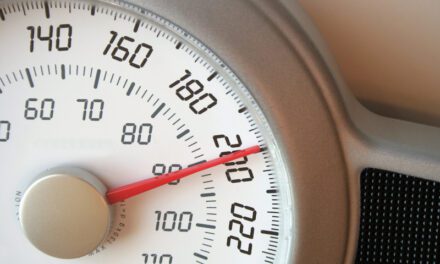 |
Bariatric surgery is big—no pun intended. The amount of weight loss patients can achieve following either gastric bypass, LAP-BAND® surgery, or other such procedures is a tremendous leap forward in dealing with obesity.
However, what do these individuals do following that weight loss? In general, when their goal weight is obtained—a loss of at least 80 pounds is typical—at around 9 to 10 months following surgery, and if they have achieved a BMI of less than 30, they consult with a physician for body contouring.
Body contouring can include abdominoplasty; belt lipectomy; breast, thigh, or gluteal lifts; as well as brachioplasty. The goals of any or all of the above procedures vary somewhat depending on the patient; but, ultimately, one or two is common for all.
To discuss body contoruing, PSP sat down with Michael Kluska, DO, of the Center for Plastic & Cosmetic Surgery in St. Greensburg, Pa. He is a veteran of 110 body contouring procedures in 2009 alone.
PSP: What are the primary reasons patients typically seek body contouring following massive weight loss?
Kluska: There are two types of people who have these procedures. One is the group who wants to change appearance purely for cosmetic purposes. They are trying to look younger because they feel younger. They generally want to address not only the abdomen but the breasts, arms, thighs, and buttocks. This is not usually covered by insurance.
The second group is the ones who need it to improve health and hygiene. Getting rid of all the extra skin in the abdominal region tends to improve their function greatly. Insurance will cover this as long as there is documentation over time that the patient has had ongoing health or hygienic problems related to the extra skin. This is generally documented as chronic rashes or irritation in the folds of the abdominal pannus or difficulty with voiding.
PSP: Within the entire body contouring process from removing the excess weight to trimming the excess flesh, is there a particular procedure that is especially high-end?
Kluska: The abdominoplasty is the one most often requested, for the reasons stated above. The breast augmentation is second.
PSP: Has there been any decline in the demand for these procedures with the decline in the economy?
Kluska: That goes back to the insurance. There hasn’t been any change in the number of people who are insured having the procedures, but the number choosing to have it private pay has decreased. What usually happens, though, even with the insured patients is that once they have the abdominoplasty and see the results, they are willing to privately pay for further body contouring procedures.
PSP: What are the newest procedures or technologies available in body contouring post bariatric surgery/weight loss?
Kluska: There isn’t a lot new in the head and neck area for body contouring. Getting rid of the excess skin around the face and neck, eyebrow lifts or tucks, those approaches are mostly the same with one caveat—the surgeon should be aware that no matter how tight the skin is pulled, it has lost its elasticity and integrity due to being overweight or malnourished for so long that it is likely the patient will still have stretch back down the road.
The newest thing is a mini-facelift with volume restoration [via] fat transfer or the use of Radiesse or Sculptra (which just got FDA approval in early 2009) for cosmetic restoration. This allows them a couple of years of longevity on their facial procedures.
The trunk region would include the breasts and abdominal areas. Most patients do not need breast reductions. More need volume restoration in the form of the usual left with implants for residual sagging. This is not new. Additionally, the anterior abdomen does not typically need liposuction.
We do use a more advanced technique using the Avelar abdominoplasty, which combines some liposuction with the removal of excess skin in the lower abdominal region and tightening of the anterior abdominal musculature. This technique maintains viability and provides for better contouring of the abdomen.
The technology I have introduced into my practice over the last couple of years is the use of Quill barbed sutures. This is a bidirectional barbed suture, which is kind of like an umbrella. You put it in with the point in and the umbrella is closed, then you pull back and the umbrella opens. That’s how this suture works. What’s nice about this suture is that it decreases the operational time for the patient because you can close quicker. There is no knot tying for the sutures. There are other benefits to the patient as well. It speeds up wound healing, and there aren’t a lot of edematous changes or areas of ischemia in the tissues because of the knots.
The last thing is that the Quill suture closes the wound in an X-Y and Z axis, and takes the tension off the wound in all three directions; this allows the wound to heal more quickly. We use that for both the fat and the skin closure both subcutaneously and subcuticular, as well as when we do the diastasis repair.
I also use a pain pump for the abdominoplasties by threading the catheter to the anterior abdominal fascia, because with less pain the healing process and recovery is quicker.
The gluteal region—these patients usually end up with a lot of laxity in the buttocks and upper thigh region and resulting in excess skin. The easiest technique for them to achieve rejuvenation in this area is to have a gluteal or lower body lift with concomitant thigh lift. Many physicians now de-epithelialize a portion of the excess skin in the gluteal region to create a mound, so that when the skin that is lifted and draped over that area, you are creating a gluteal augmentation like a breast implant. You are using autologous tissue from the patient, which works very nicely.
[For] liposuction, I tend to stand behind the use of the power-assisted suction via micro-air suction instead of laser-assisted liposuction because the laser assisted tends to be a little slower.
PSP: Do prospective patients ask you about combining body contouring with other procedures, such as a breast reduction, etc? Are there any you stay away from?
Kluska: For people who have had gastric bypass or LAP-BAND work, these patients tend to want to accomplish as much as they can as quickly as possible. The most common request is for breast lift or reduction combined with abdominoplasty. Sometimes both of these can be covered by insurance, depending on the state and the insurance company. Most of the time, they are not.
A little less common is the tummy tuck with the lower-body lift, gluteal lift, where we lift off the excess skin from the gluteal region as well as the lateral thighs—that is where most people gain the weight the quickest and lose it the fastest.
Combinations of procedures I stay away from? Anything that is going to take me more than 4 to 5 hours to do, in general, I will break the procedures up. And it’s just out of safety for the patient. Also you can become fatigued as a surgeon. So, I try to perform trunk procedures, such as breast and tummy tuck together. If somebody wants arms done or a facelift procedure, then that will be at a later date.
When you do combine procedures, especially in the post-gastric bypass patient, you get a higher risk of deep venous thrombosis and pulmonary embolism.
For any patient who is a smoker and is having multiple procedures, you just increased your risk of problems.
 |
 |
| Figure 1. Female patient with a history of 150 pounds weight loss, before and 3 months after an abdominoplasty with the repair of diastasis recti and a medial thigh lift. PHOTOS COURTESY OF MICHAEL KLUSKA, DO | |
PSP: Do you see body contouring as an art form rather than just a series of reconstructive/cosmetic/plastic surgeries?
Kluska: Obviously, what we do requires an artistic eye. Plastic surgery isn’t just science. There’s a lot of art to it, and being able to visualize three-dimensionally and put it into form and function helps significantly. I have a background in art—I was an art major in college.
PSP: The emergence of noninvasive procedures has captured a segment of the physician community, especially following the steady stream of new technologies and new external devices that show promise in the body contouring procedures. What is your comment?
Kluska: When you start getting into laser-assisted liposuction and it only takes a half-hour or start getting into external devices for the emulsification of fat—such as external ultrasound—these procedures never are as good as the original, invasive procedures. I agree that the more invasive something is the greater, more long-lasting result.
You end up with some very disappointed patients; patients who had higher expectation but got less out of what they were promised.
When it comes to laser liposuction, for example, or the external products that are out there, there is a product from Canada that is getting clinical trials in the United States, for the external ultrasound for the emulsification of fat. I really don’t see a huge benefit to this product yet. I think trying to emulsify fat through the skin without burning the skin or causing any type of problems, and a more superficial plane… There’s still a lot to be discovered on this product; I don’t think it’s going to work.
My colleagues who have purchased a laser liposuction machine have told me the thing they use it for is marketing. If that’s the case, for a $100,000 piece of equipment, I’ll spend it on other marketing materials.
PSP: What about using the external devices, as you call them, for simpler touch-up types of jobs?
Kluska: It’s not that you couldn’t use the other products out there, such as traditional liposuction or power liposuction. It’s that the other guys are trying to find a niche for laser-assisted liposuction. Because it’s an easier procedure; it’s not meant for large volume; it’s truly is meant for very small, subtle defects. Many times, those defects can be taken care of with a multitude of other approaches.
PSP: Where do you see us going in the areas of patient safety and the role of these newer technologies in patient safety?
Kluska: I hope it will be governed, but I think in the future as body contouring procedures become more popular and are financially beneficial for the surgeon, and potentially more surgeons will come in with less training—and who will be jumping on the bandwagon. Then that increases the risk to the patient. As far as the gastric-bypass or LAP-BAND procedures themselves, you’re going to find surgeons who jump onto that technology and are trying to capitalize or get a piece of the pie, so to speak.
That said, after those patients have lost their weight and you get into the surgical approach to removing the excess skin and fat, there are a lot of people jumping onto that bandwagon as well. Plastic surgeons, cosmetic surgeons trying to take on new types of procedures, and unless they do a lot of them the quality of those procedures can be challenged.
From the patient’s standpoint, he or she needs to be well-educated on this and even do research. Make sure the surgeon they’re dealing with is capable of doing these procedures and has done a lot of them.
Connie Jennings is a contributing writer for PSP. She can be reached at [email protected].




